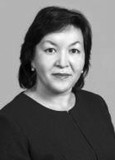Comparative characteristics of anthropometric and bioimpedancemetric indicators of highly qualified wrestlers and boxers of Yakutia
Keywords:
anthropometry, bioimpedancemetry, wrestlers, boxing, Yakutia, body components.Abstract
Abstract
Objective of the study was to identify the features of anthropometric and bioimpedancemetric indicators of highly qualified wrestlers and boxers from Yakutia.
Methods and structure of the study. 49 male athletes participating in the Republican Center for Sports Training of National Teams of the Republic of Sakha (Yakutia) took part in the scientific work. Of these, 36 athletes were engaged in freestyle wrestling, 13 – boxing. Body length and weight, chest circumference, waist and hips were measured. The bioimpedance study included the determination of active and reactance resistance and body components: fat mass, active cell mass, skeletal muscle mass, lean mass of athletes.
Results and conclusions. Athletes involved in freestyle wrestling showed significantly higher indicators of body weight, body mass index, hip circumference and chest circumference, and the absolute amount of skeletal muscle and lean mass. Frequency analysis of BMI determined the presence of overweight and obese individuals among the wrestlers. Among the boxers, there were no overweight or obese individuals based on BMI. According to the bioimpedance study, significantly higher rates of active and reactive resistance were found in boxers due to reduced body hydration. The resulting anthropometric and bioimpedance metrics provide valuable scientific data that can be used to improve the effectiveness and individualization of training, weight management and improve the overall performance of athletes involved in freestyle wrestling and boxing.
References
Vybornaya K.V. Somatotipologicheskiye kharakteristiki sportsmenov razlichnykh vidov sporta. Sportivnaya meditsina: nauka i praktika. 2022. Vol. 12. No. 3. pp. 14-29.
Isaev A.P., Erlikh V.V., Shevtsov A.V., Bychkovskikh V.A., Korableva Yu.B. Integralnyye kriterii sistemoobrazuyushchikh faktorov funktsionalnoy sistemy organizma sportsmenov vysokoy sportivnoy kvalifikatsii raznykh vidov sporta. Chelovek. Sport. Meditsina. 2021. Vol. 21. No. 2. pp. 7-18.
Nikolaev D.V., Rudnev S.G. Sostav tela i bioimpedansnyy analiz v sporte (obzor). Sportivnaya meditsina: nauka i praktika. 2012. No. 3. pp. 34-41.
Panchenko I.A., Simakov A.M., Tkachuk M.G., Alekseeva N.D. Polovyye razlichiya morfofunktsionalnykh priznakov u lits, zanimayushchikhsya yedinoborstvami. Teoriya i praktika fizicheskoy kultury. 2023. No. 3. pp. 93-95.
Popova E.V., Khomyakova I.A., Zadorozhnaya L.V., Gundegmaa L., Otgon G., Bondareva E.A. Morfofunktsionalnyye kharakteristiki altaytsev i mongolov, spetsializiruyushchikhsya v volnoy borbe. Zhurnal mediko-biologicheskikh issledovaniy. 2020. Vol. 8. No. 4. pp. 385-393.
Tseslinski I. Antropometricheskiye profili i sostav tela silneyshikh polskikh bortsov klassicheskogo stilya. Teoriya i praktika fizicheskoy kultury. 2020. No. 7. pp. 69-71.

Additional Files
Published
How to Cite
Issue
Section
License
Copyright (c) 2024 Theory and Practice of Physical Culture

This work is licensed under a Creative Commons Attribution 4.0 International License.
